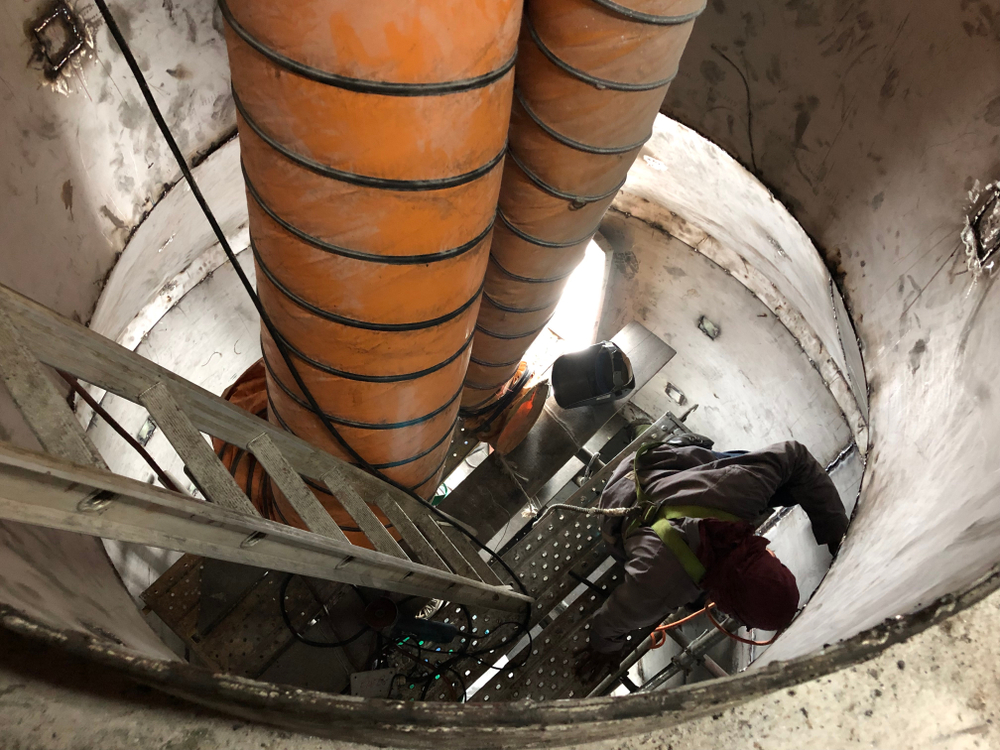
Agencies like Occupational Safety and Health Administration (OSHA) have identified some jobs as being hazardous and laid out potential solutions to perform them safely. Welding is one such job. It deals with intense heat, sparks, electrical inputs, and hazardous fumes dangerous for welders to carry out without proper precautions. When working in confined spaces, the intensity of these risks increases multiple folds.
While there are standard safety practices in place, such as using PPE (Personal Protective Equipment), it is not as effective as using an automated system, which will reduce the need for the immediate presence of the operator. This is especially beneficial when welding pipes and tubes in confined spaces where orbital GTAW (Gas Tungsten Arc Welding) produces a much more precise and clean weld than when done manually.
Why Welding in Confined Spaces Is Dangerous
Confined spaces mean any area with relatively low clearance or restricted access. These spaces are partially or wholly enclosed without natural ventilation. When welding pipes or tubes in such spaces, the risk of serious occupational hazards becomes high, this occurs from the need to maintain some awkward physical position, such as when overhead welding or from continuous exposure to welding fumes. Moreover, the quality of the weld also gets compromised. Let’s look at some of the difficulties of welding in confined spaces.
- Restricted Movement
The restricted entry/exit and low headroom make it difficult for welders to access the weld area. This also creates difficulty in positioning while manual welding or when performing bulkier orbital welding. Given that welders may need to crawl or bend for an extended period, such as when welding the inner diameter of a pipeline, they may incur serious health hazards with exposure to sparks, electric shocks, and inhalation of hazardous fumes.
- Lack of Ventilation
Hazardous welding fumes and vapors can easily accumulate in enclosed spaces with restricted ventilation. Many times these gasses are flammable and can ignite with sparks leading to fire and hazardous explosions. When welding tubes that are usually made of stainless steel, the welders are exposed to cancerous hexavalent chromium, the intensity of which can be severe in confined spaces. In addition, as fumes replace the oxygen, suffocation can be another life-threatening issue for welders.
- Reduced Weld Quality
When there is a lack of proper access and compromise in weld positioning, there is a definite lack in the quality of the weld. The inferior quality and reduced productivity also come from fatigue that welders experience due to working in awkward positions.
Standards for Safety Practices
Welding in confined spaces is regulated by OSHA standards which recommend basic precautions and restrictions for accident prevention and welders’ safety. The requirements are enlisted under —
- Section 1910.252 – General requirements ( for fire prevention)
- Section 1926.353- Ventilation and protection in welding, cutting, and heating
AWS (American Welding Society) also defines confined space and provides recommendations for preventive action to take when hot working on such areas. AWS-approved ANSI Z49.1 specifies practice for Standard in Welding, Cutting, and Allied Processes.
Together, these standards emphasize the implementation of safety practices such as —
- Proper ventilation system
- Removal of hazardous material from the weld area
- Use of PPE
- Provision for emergency exits or “lifelines” in case of emergency
- Air quality test pre-welding
One way to adhere to these safety measures effectively is through orbital welding.
Orbital GTAW: The Ideal Precautionary Measure
The automated orbital GTAW can continuously work in confined spaces in any position and produce repeatable quality results. The operators can keep a safe distance, monitor the weld, and optimize any parameter with the remote control system. The easy-to-handle orbital weld heads can weld on narrow gaps and difficult-to-reach spaces while enabling complete shielding of the weld pool.
The safety advantage of this welding technique is that welders are safe from potential risks of fatigue, burns, toxic gasses, electric shocks, radiation, and fire. At the same time, the precision of orbital GTAW helps achieve the highest quality result possible as achievable when welding in confined spaces. Therefore, not just as a precautionary measure, but orbital welding should be the first choice for welding if quality, safety, and precision are your primary needs.
Arc Machines, Inc. is a leading provider of a wide range of orbital welding solutions such as weld heads, power supplies, and monitoring systems to help you achieve a safe, clean, and precise result when welding in confined spaces. For inquiries regarding products, contact sales@arcmachines.com. For service inquiries, contact service@arcmachines.com. Contact us to arrange a meeting. Arc Machines welcomes the opportunity to discuss your specific needs.




